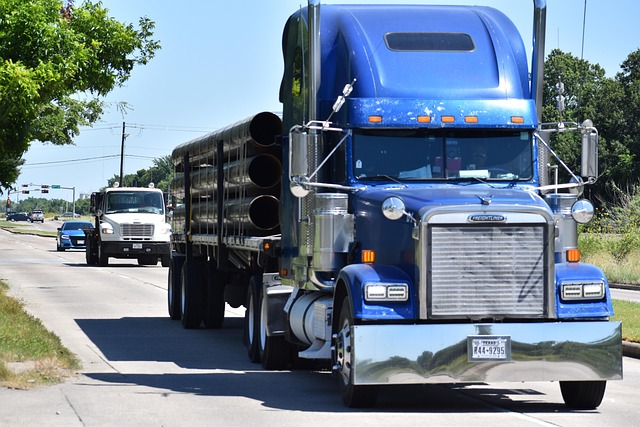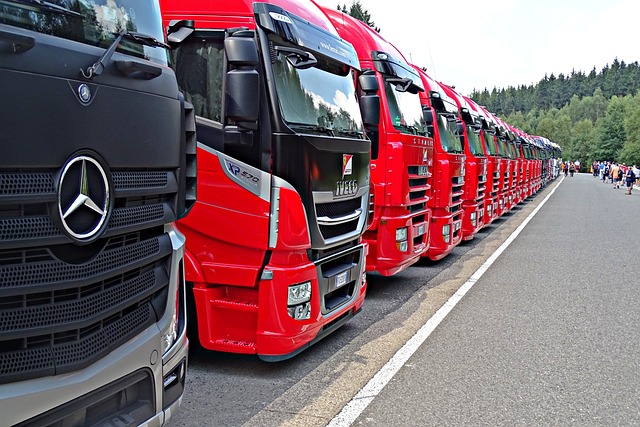Registering a car in California involves understanding specific requirements and navigating several steps. This comprehensive guide breaks down the process, from gathering essential documents like proof of insurance and ownership (title) to undergoing a DMV VIN verification inspection. You’ll learn how to complete the registration application, pay fees, and obtain your vehicle’s official plates. By following these clear instructions, you’ll ensure a smooth car registration experience in California.
- Understand California Car Registration Requirements
- Gather Necessary Documents for Registration
- Visit Your Local DMV for Vehicle Inspection
- Complete the Registration Application Process
- Pay Registration Fees and Receive Your Plate
Understand California Car Registration Requirements

Before registering your car in California, it’s crucial to understand the state’s specific requirements. The California Department of Motor Vehicles (DMV) mandates several steps for new and existing vehicle owners, ensuring a comprehensive process that includes thorough inspections and accurate record-keeping. One critical aspect is the DMV’s Vehicle Identification Number (VIN) verification, which serves as a robust security measure against fraud. This process involves cross-referencing your car’s VIN with the manufacturer’s records to ensure authenticity.
Additionally, California requires all vehicles to pass an emission test, further underscoring the state’s commitment to environmental sustainability. For those considering a mobile vin verifier or mobile vin inspection, rest assured that these services are legally recognized as efficient ways to fulfill the initial VIN verification requirement, streamlining the registration process and making it more convenient for residents.
Gather Necessary Documents for Registration

Before you begin the registration process, ensure you have all the essential documents ready. In California, registering a car requires specific paperwork to be submitted to the Department of Motor Vehicles (DMV). One crucial document is the Vehicle Identification Number (VIN) verification, which can be efficiently completed using a mobile vin verifier or through a mobile vin inspection service. This process involves cross-referencing your vehicle’s unique VIN with official records to ensure its authenticity and history.
Gathering these documents is a vital step in ensuring a smooth registration experience. Along with the VIN verification report, you’ll need to provide proof of insurance, a completed application form, and the necessary fees. It’s advisable to check the DMV’s website for the most up-to-date list of requirements, as they may change over time.
Visit Your Local DMV for Vehicle Inspection

Before you can register your car in California, your vehicle must pass a thorough inspection to ensure it meets all safety and emissions standards. The first step in this process is to visit your local Department of Motor Vehicles (DMV) office for a vehicle inspection. During this inspection, DMV personnel will verify the Vehicle Identification Number (VIN) of your car to ensure it’s accurate and matches the information on record.
This critical step includes a detailed check of your car’s components, such as lights, brakes, tires, and exhaust system. Additionally, a mobile vin inspection or using a mobile vin verifier can be helpful if you’re unable to visit the DMV in person. These services allow for convenient and efficient VIN verification, ensuring that your vehicle is compliant with California’s registration requirements before you submit your application.
Complete the Registration Application Process

To complete the registration application process for your car in California, you’ll need to gather essential documents and information. Start by visiting a California Department of Motor Vehicles (DMV) office or using their online services. Fill out Form DV-140, which is the Application for Title and Registration. This form requires details like your personal information, vehicle specifications, and current address. Ensure you provide accurate data as it’s crucial for successful registration and DMV vin verification.
A key step in this process involves conducting a Vehicle Identification Number (VIN) verification. If you opt for a mobile VIN verifier or perform a mobile VIN inspection, make sure the results are up-to-date and valid. This verification ensures your vehicle matches the details on record and helps prevent fraud. Once all forms are completed and required documents submitted, the DMV will process your application, issue a registration certificate, and provide you with a California license plate.
Pay Registration Fees and Receive Your Plate

After completing your vehicle’s registration application and passing the DMV vin verification process, it’s time to pay the registration fees. The cost varies depending on your vehicle type, age, and other factors, so be sure to check the official California DMV website for up-to-date information. You can typically pay online, by mail, or in person at a local DMV office. Once your payment is processed, you’ll receive your vehicle’s license plate. This essential component not only identifies your car but also signifies that it has met all the necessary legal requirements for operation on California roads.
Don’t forget, utilizing a mobile vin verifier can streamline this process by allowing for convenient and efficient VIN inspection, ensuring a smoother experience from start to finish.
Registering a car in California involves several straightforward steps, from understanding requirements to completing the application process. Ensure you have all necessary documents, including proof of ownership and identification. Undergo the DMV’s VIN verification for accurate vehicle identification. Visit your local DMV for inspection, then pay the registration fees to receive your license plate. Following these steps ensures your vehicle is legally registered in California.
